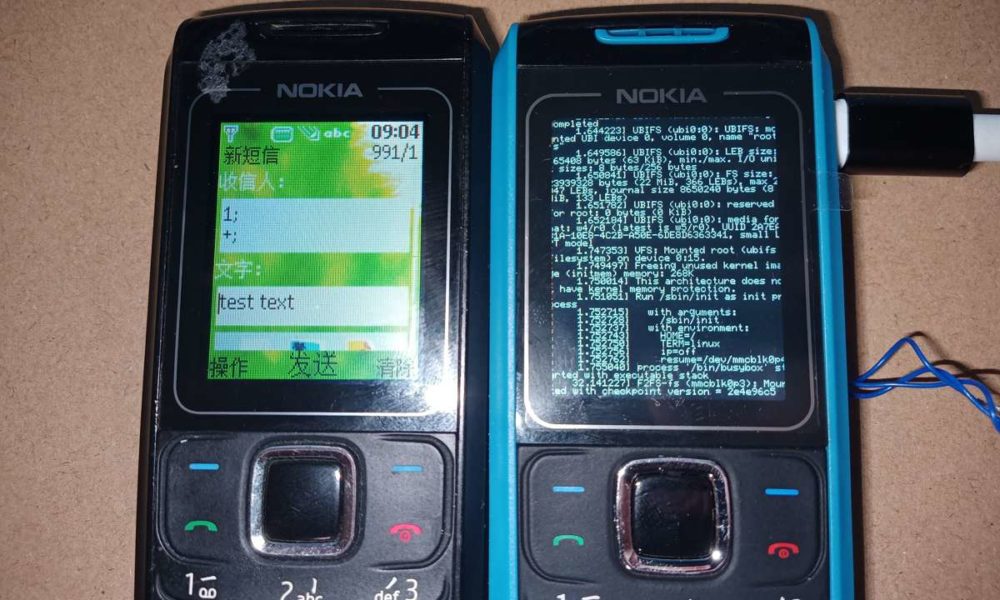There are hackers and technicians who spend time turning devices into amazing things. This is the case of a man who calls himself Remus NotMoe, who took a Nokia 1680 phone to turn it into a Linux mini-PC called Notkia.
The Nokia 1680 was launched in 2008 and is a relatively basic phone with support for calling, sending and receiving text messages and support for 2G networks. As a classic device, the screen is small and has a physical numeric keypad. His transformation into Notkia involved not only changing the software, but also all or almost all of its “guts.”
To turn the Nokia 1680 into Notkia, Remu NotMoe removed the original insides of the mobile phone and replaced them with its own PCB and other components. The casing, numeric keypad and other buttons have, of course, been retained, so the experiment has an aspect that has not changed since it was a “clean” mobile phone.
Properties of own printed circuit boards and Ingenic X100E processor, which is MIPS, single core and 1 GHz. At the memory level, it contains 64 MB RAM, 32 MB NOR flash and 4 GB SLC NAND flash. The screen itself was replaced because the original was TFT and worked at a resolution of 128 × 160 pixels, while the new one is IPS LCD with a native resolution of 240 × 320 pixels. Obviously, to fit the new screen, both are 2 inches in size.
Other Notkia features are the port USB Type-C (although it is not known whether it is a 2.0 or third generation), a 5 megapixel Waveshare OV5640 autofocus camera, a Yamaha MA-3 music synthesizer with ringtone support, an MEMS (Micro Electromechanical Systems) analog microphone, an AMPAK module with Wi-Fi 4 support and Bluetooth 4.0 LE, Semtech SX126x LoRa transceiver and BL-5C batteries.
Notkia works with standard Linux, more specifically Debian 11 Bullseyebut Remu NotMoe was not able to find a small enough 4G LTE module to fit the device, so At least you can’t make calls or use the mobile internet yet. To support the headphones, you must connect wirelessly or use a USB Type-C adapter to a 3.5 mm jack, as models that go directly via USB Type-C are less common. The mini-PC has a GNSS module, but has not been tested.
All details about Notkia are published by Rem NotMoe on Hackster and HackADay. The project was sent for service crowdfunding Crowd Supply, which specializes in financing open source hardware. If it continues, it is likely that Notkia will be marketed in some way in the future, although it is not expected to be a massive product.
